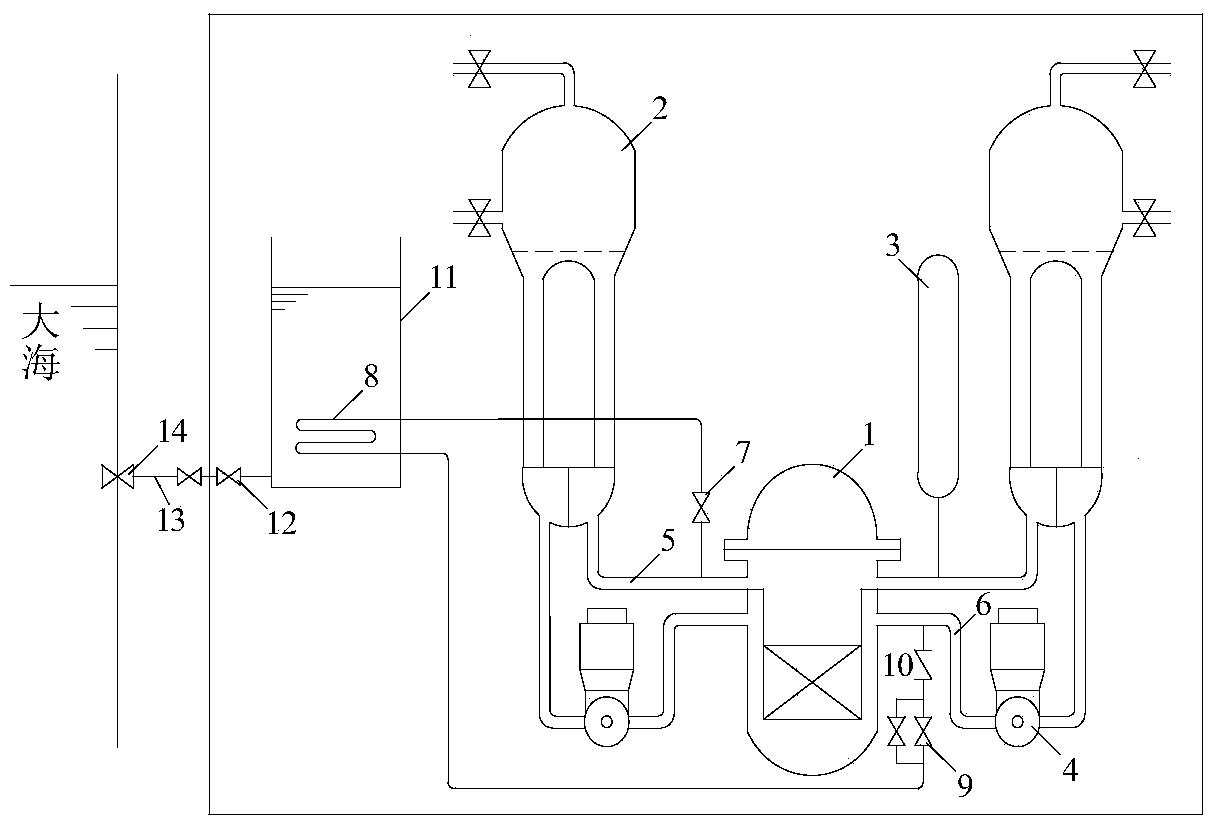Passive waste heat removal system for floating nuclear power plant
A passive waste heat and nuclear power plant technology, applied in the field of safety systems, can solve problems such as unfavorable natural circulation, long pipelines, and large flow resistance, and achieve the effects of small seawater flow, reduced resistance, and reduced flow resistance
- Summary
- Abstract
- Description
- Claims
- Application Information
AI Technical Summary
Problems solved by technology
Method used
Image
Examples
Embodiment Construction
[0017] The present invention will be further described below in conjunction with the accompanying drawings.
[0018] The passive waste heat removal system of a floating nuclear power plant as shown in Figure 1 includes a reactor pressure vessel 1, a passive waste heat discharge heat exchanger 8 and a passive emergency cooling water tank 11; the passive waste heat discharge heat exchanger 8 is located in the emergency cooling water tank 11 The bottom, which is higher than the reactor core, ensures that the main cooling system of the primary circuit has sufficient natural circulation to drive the pressure head. At least one set of main coolant pipes on the reactor pressure vessel 1 is connected with the steam generator 2 . The inlet pipe of the passive waste heat discharge heat exchanger 8 is connected to the hot pipe section 5 of the main cooling system pipe of the primary circuit, and the outlet is connected to the cold pipe section 6 of the main cooling system pipe of the pri...
PUM
 Login to View More
Login to View More Abstract
Description
Claims
Application Information
 Login to View More
Login to View More - R&D
- Intellectual Property
- Life Sciences
- Materials
- Tech Scout
- Unparalleled Data Quality
- Higher Quality Content
- 60% Fewer Hallucinations
Browse by: Latest US Patents, China's latest patents, Technical Efficacy Thesaurus, Application Domain, Technology Topic, Popular Technical Reports.
© 2025 PatSnap. All rights reserved.Legal|Privacy policy|Modern Slavery Act Transparency Statement|Sitemap|About US| Contact US: help@patsnap.com

